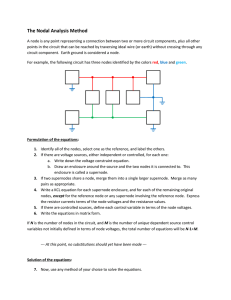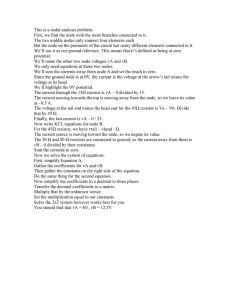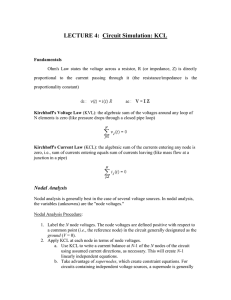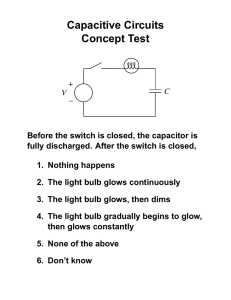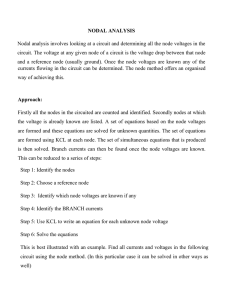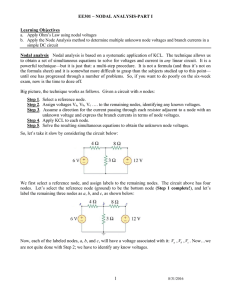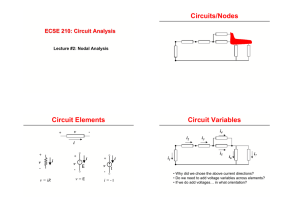Let’s find the three indicated node voltages using the node... As we look at the circuit, there is a total...
advertisement
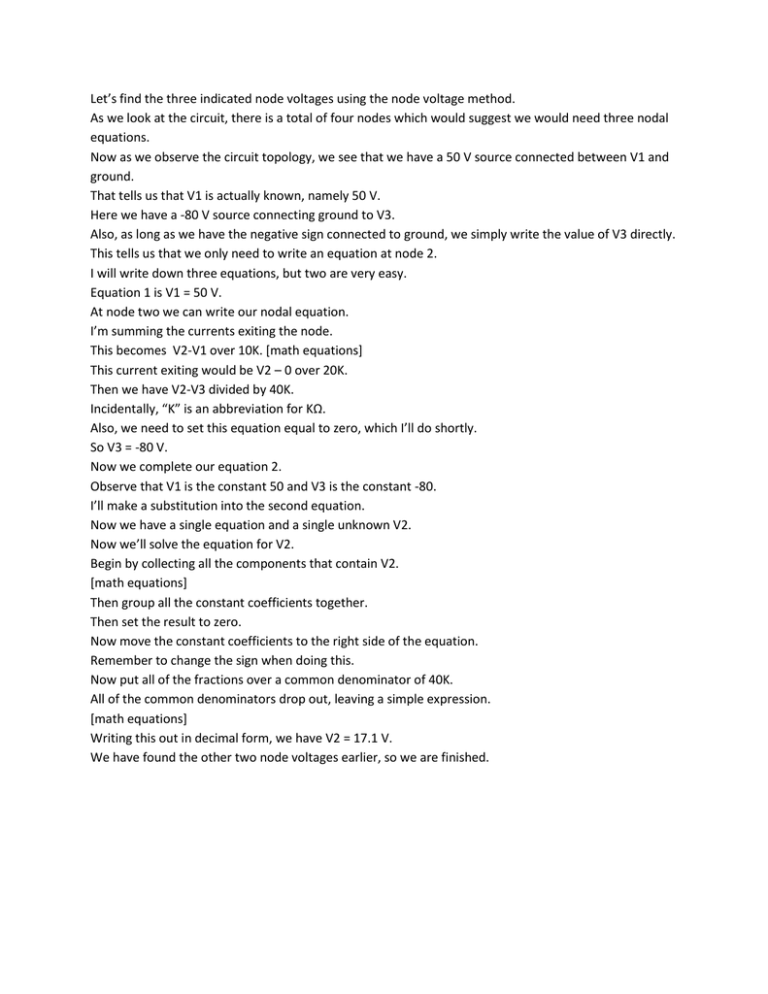
Let’s find the three indicated node voltages using the node voltage method. As we look at the circuit, there is a total of four nodes which would suggest we would need three nodal equations. Now as we observe the circuit topology, we see that we have a 50 V source connected between V1 and ground. That tells us that V1 is actually known, namely 50 V. Here we have a -80 V source connecting ground to V3. Also, as long as we have the negative sign connected to ground, we simply write the value of V3 directly. This tells us that we only need to write an equation at node 2. I will write down three equations, but two are very easy. Equation 1 is V1 = 50 V. At node two we can write our nodal equation. I’m summing the currents exiting the node. This becomes V2-V1 over 10K. [math equations] This current exiting would be V2 – 0 over 20K. Then we have V2-V3 divided by 40K. Incidentally, “K” is an abbreviation for KΩ. Also, we need to set this equation equal to zero, which I’ll do shortly. So V3 = -80 V. Now we complete our equation 2. Observe that V1 is the constant 50 and V3 is the constant -80. I’ll make a substitution into the second equation. Now we have a single equation and a single unknown V2. Now we’ll solve the equation for V2. Begin by collecting all the components that contain V2. [math equations] Then group all the constant coefficients together. Then set the result to zero. Now move the constant coefficients to the right side of the equation. Remember to change the sign when doing this. Now put all of the fractions over a common denominator of 40K. All of the common denominators drop out, leaving a simple expression. [math equations] Writing this out in decimal form, we have V2 = 17.1 V. We have found the other two node voltages earlier, so we are finished.

